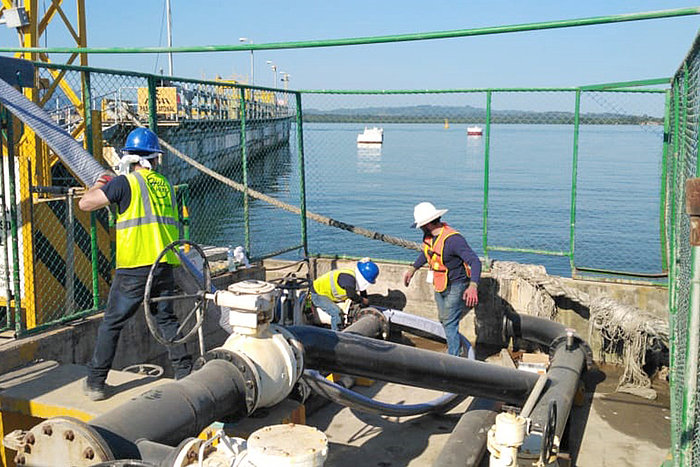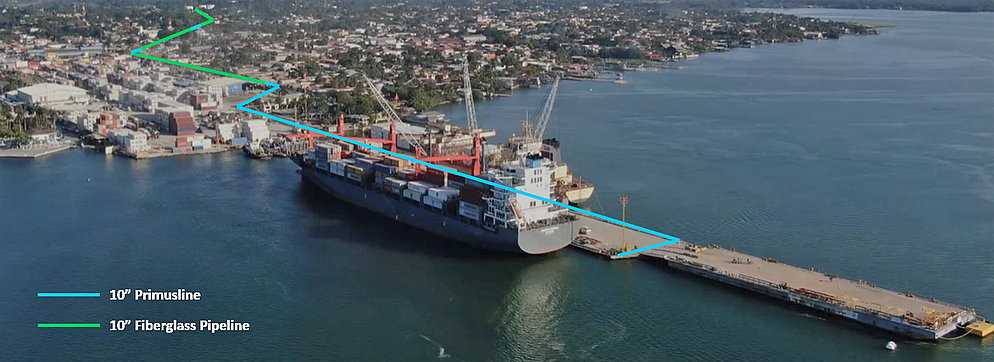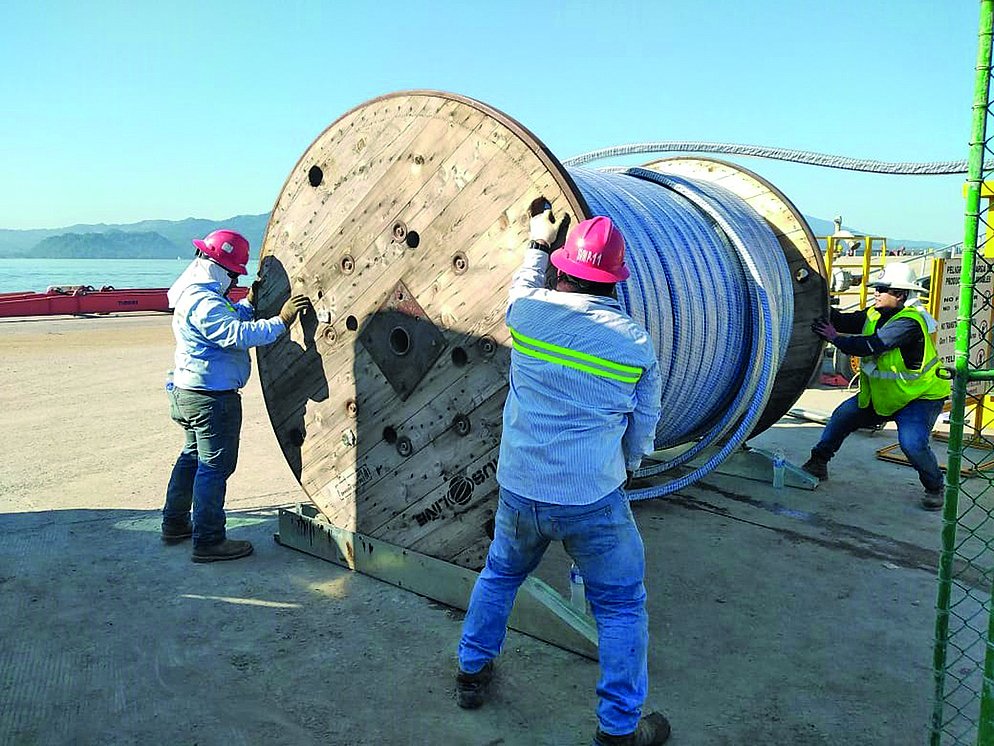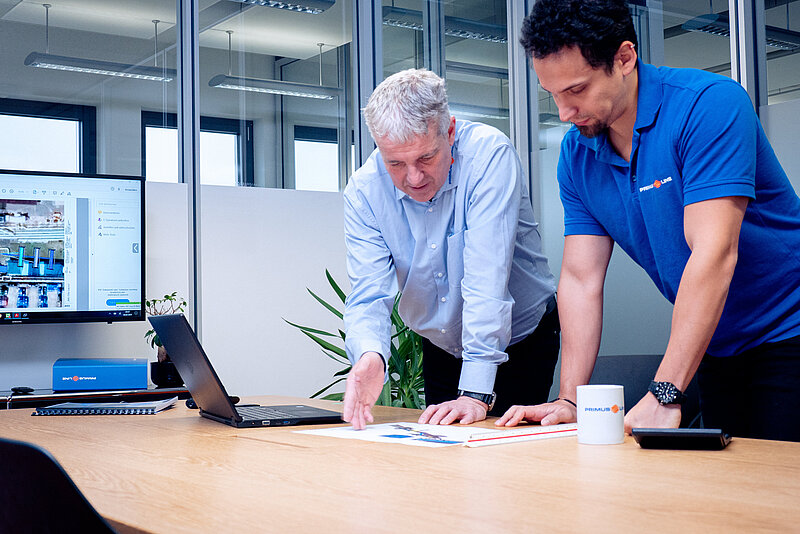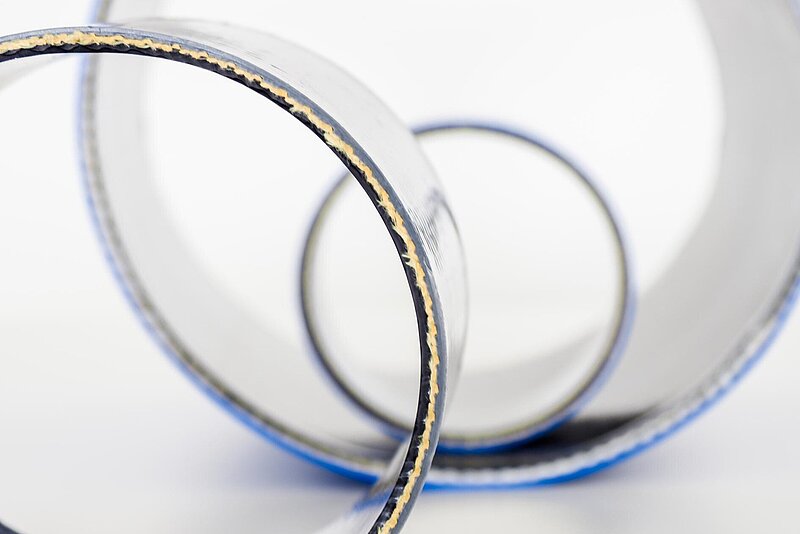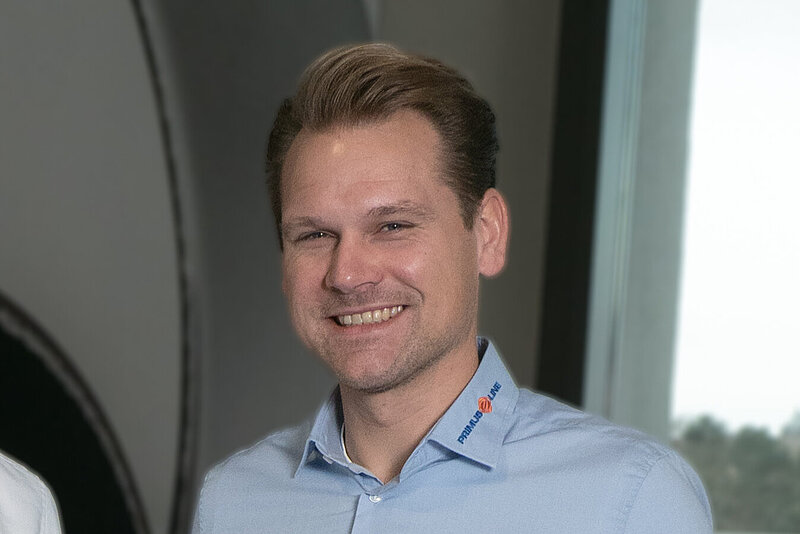Primus Line has performed a Rehabilitation Project of a 10" carbon steel service pipeline with PN 10 (150 psi) in a river crossing area. The Line starts at the wharf and terminates in a tank terminal. Tankers discharge petrochemical products weekly. The carbon steel pipeline suffering corrosion runs through a concrete gutter covered by steel plates along the docking edge of the wharf. Other parts of the pipeline run underground and are surrounded by concrete. The pipeline was operated with different media and therefore had to be pigged continuesly, which also accelerated the corrosion process.
The oil industry is facing new challenges as a result of damage to steel pipelines caused by internal corrosion. Possible leakages might cause significant environmental damage; they also mean increased costs, loss of productionor even loss of reputation for network operators. Primus Line® is suitable for the renovation of oil pipelines due to the medium-specific inner layer, and acts as a corrosion barrier between the transported fluid and the host pipe. The conveyed fluid covers media from categories as diesel, crude oils, fuel oils, oil slag and other refined products.
This pipeline in Guatemala in an environmental-sensitive and difficult-to-access area cannot be shut down for more than seven days because incoming vessels cannot be rescheduled. The total replacement of the pipeline was consequently not an option for the client. The Primus Line® System DN 250 PN 10 was the best option to minimize cost, avoid downtime and significantly extend the lifespan of the existing pipeline within the seven-day rehabilitation window offered in this location.
